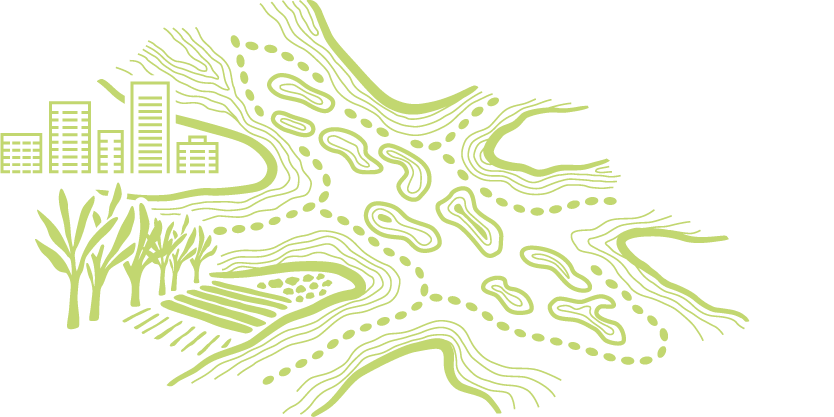Land-based runoff refers to freshwater flow (Section 3.2.3) from the terrestrial environment and what is carried with it into receiving waterbodies, such as rivers, creeks, wetlands, and nearshore marine waters. Land-based runoff is often associated with increased supply into the Reef lagoon of pollutants, such as suspended sediments, particulate and dissolved forms of nitrogen and phosphorus, and pesticides.1816 Activities, such as the application of fertilisers, deforestation, coastal development (Section 6.4), livestock management, pest control, stormwater and sewage management, aquaculture, mining and fracking and earthworks, can all influence land-based runoff and negatively affect downstream water quality.
Land-based runoff remains the greatest contributor to reduced water quality, resulting in the declining state of many inshore marine ecosystems in some areas of the Reef.1817 The main contemporary source of the primary pollutants (nutrients, sediments, and pesticides including herbicides, insecticides and fungicides) from the Catchment is diffuse source pollution from agriculture.40,1818,1819 Groundwater also has a potential role in nutrient and pesticide transport into the marine environment.1820,1821,1822,1823 The impact of pollutants found in riverine plumes is evident up to 20 to 30 kilometres offshore during large flood events, and will depend on the size and duration of the event.1824
The Reef 2050 Water Quality Improvement Plan 2017–2022 1825 (Reef 2050 WQIP) seeks to improve the quality of water flowing from the catchments adjacent to the Reef and support the resilience of the Reef’s ecosystems. The whole-of-Reef water quality targets in the Reef 2050 WQIP to be achieved by 2025 include a:
- 60 per cent reduction in anthropogenic end-of-catchment dissolved inorganic nitrogen loads
- 20 per cent reduction in anthropogenic end-of-catchment particulate nutrient loads
- 25 per cent reduction in anthropogenic end-of-catchment fine sediment loads
- Pesticide target: to protect at least 99 per cent of aquatic species at the end-of-catchments.


